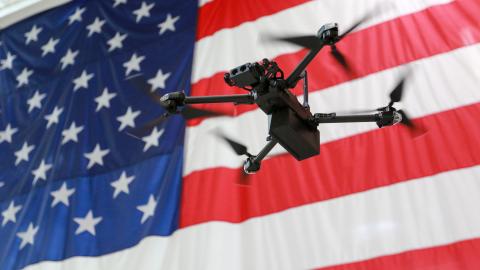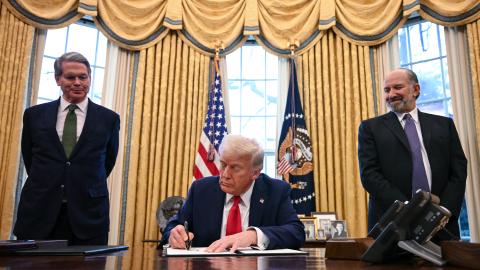Israel — the Jewish state — is a focal point of concern to countless American Jews and Christians, particularly during times of political and military turbulence. And for me, having lived in Jerusalem for 10 years, my interest is focused not only on international news reports but also on specific Israeli friends and families and the difficulties they are presently facing.
For example, on Sunday, August 25, I received one disturbing warning after another from a well-connected Jerusalem woman. Alarming announcements were broadcast by Israeli media to the country’s anxious population. For example:
- Ben Gurion Airport is closed. All incoming flights have been diverted to Rimon airport north of Eilat.
- The Security Cabinet will convene in the underground bunker in the Kirya base in Tel Aviv at 07:00.
- More than 200 rockets and UAVs have been fired at northern Israel since 05:30.
Such disruptions to Israeli life have continued since the morning hours of October 7, 2023. Since then, drone and rocket attacks, explosions, deaths of IDF soldiers, and reports of violence have persisted from one side of the country to the other.
On that infamous day, Islamist Hamas terrorists launched a murderous assault on Israeli communities — the deadliest attack on Jews since the Holocaust. The brutality was unfathomable. Brutal rapes of women and girls were posted on social media by their giddy assailants; infants were mutilated and slaughtered before their parents’ eyes, homes in quiet neighborhoods were torched with entire families trapped inside their “safe rooms.” Around 1,200 innocents were murdered while Hamas-led thugs abducted some 250 people and imprisoned them in Gaza’s maze of underground tunnels. Several hundred victims were young Israelis celebrating at the “Tribe of Nova” music festival.
Since that day, Israel’s retaliatory offensive has been devastating. According to an August 15 report from the Council on Foreign Relations, “Recent casualty estimates from the Hamas-run Gazan Health Ministry place the death toll in Gaza at around 40,000, though such numbers are challenging to verify due to limited international access to the strip.”
Israel’s military response to the Hamas attacks has reportedly displaced 90% of Gaza’s 2.3 million people from their homes and has caused devastation across Hamas-controlled territory. Other recent reports indicate that the terror group is still holding around 108 hostages, including 104 of the 250 hostages taken on October 7. It is believed that 34 of them are deceased, according to the military. Most of the rest were released during a cease-fire last November in exchange for hundreds of Palestinian terrorists in Israeli prisons.
Unfortunately, the Hamas terrorist attacks in Gaza are not Israel’s only concern.
On October 8, the day after the Hamas attack, the terror group Hezbollah launched guided missiles and artillery shells across Israel’s northern border. The New York Times reported in early August that many villages and towns near Israel’s border are all but ghost towns. Roughly 60,000 people in northern Israel and 100,000 in southern Lebanon have been displaced by the fighting along the border since October, with no clear timeline for returning home.
Today’s conflict in Israel notably involves the activities of two separate terror groups — Hamas and Hezbollah — both proxies of Iran’s terrorist regime. And their lethal attacks are far from being Iran’s only efforts to destroy the State of Israel. Dr. Hillel Fradkin, director of Hudson Institute’s Center for Islam, Democracy and the Future of the Muslim World, provides some details that further expose Iran’s intentions. He writes:
“At the beginning of the Islamic Republic of Iran in 1979, its founder, Ayatollah Khomeini, declared that its objective would be to destroy the State of Israel.
“And bear in mind that he also declared war on America.
“Since then, Iran has pursued that anti-Israel goal vigorously by founding or acquiring radical Shiite proxies on or near Israel’s borders — Hezbollah in Lebanon, Shiite militias in Syria and Iraq, the Houthis in Yemen. Iran has also added Hamas, the radical Sunni terrorist organization, to this group. Since Hamas shares Iran’s goal of destroying Israel and murdering Jews, the Islamic Republic has supported Hamas with money, arms and training.
“The totality of these proxies has created a so-called “Ring of Fire” around Israel — a ring of missiles and rockets — as well as infantry forces.
“The link between Hamas’ attack of Oct. 7 and Iran was made clear on Oct. 8. On that day Hezbollah broke a ceasefire with Israel and launched missile attacks on it. It has not ceased since. This would not have occurred without Iranian agreement and probable instigation, creating today’s greatest current Middle East threat.”
Unsurprisingly, threats from Hezbollah and repeated hostile incidents in the north have continued to escalate. According to CBS News, on August 25, Israel took extreme preemptive action in advance of a deadly Hezbollah attack.
“The Israeli military said around 100 warplanes launched the airstrikes targeting thousands of rocket launchers across southern Lebanon. It said it struck because Hezbollah was planning to launch a heavy barrage of rockets and missiles toward Israel. Soon after, Hezbollah announced it launched an attack on Israeli military positions with a large number of drones. The Iranian-backed group had been promising for weeks to retaliate for Israel's assassination of Fouad Shukur, one of its founding members, in Beirut last month.”
The morning after Israel’s intense pre-emptive actions, the Israel Defense Forces (IDF) Chief Spokesman Daniel Hagari explained that the IDF had monitored Hezbollah for weeks, using technology and aerial patrols by Israeli Air Force aircraft. As soon as Hezbollah’s intention to carry out the attack was identified, Hagari explained, “Hezbollah attempted to severely harm the north and center of Israel but was met with an iron fist.”
As uncertainties in Israel continue to unfold, ever-increasing debates about the American presidential elections are beginning to fill our national airwaves in the U.S. Perhaps after taking note of the existential dangers that Iran poses — not only to Israel but to the United States as well — we should be paying much closer attention to Iran’s ongoing efforts to fully develop nuclear weapons and delivery systems.
Since 1979, Iran’s religious authorities have referred to Israel as the “Little Satan” and called for its destruction. In their religious view, the “Great Satan” is the United States. From 1979 until today, Iran’s kindergarteners are taught to chant prayers for “Death to Israel” and “Death to America.”
Shouldn’t we be paying attention?
With our presidential elections rapidly approaching, we should continue to pray fervently for God’s hand of mercy on the United States and our Israeli allies. At the same time, after observing how Iran’s destructive intentions are being actively pursued in Israel, it is imperative not only that we pray, but also that we vote with wisdom. We need American leadership that will strongly reject Iran’s lethal ambitions, will refuse to fund them, and will take action to protect our homeland.
Meanwhile, let’s continue to pray for the peace of Jerusalem.
Enjoyed this article? Subscribe to Hudson’s newsletters to stay up to date with our latest content.


















